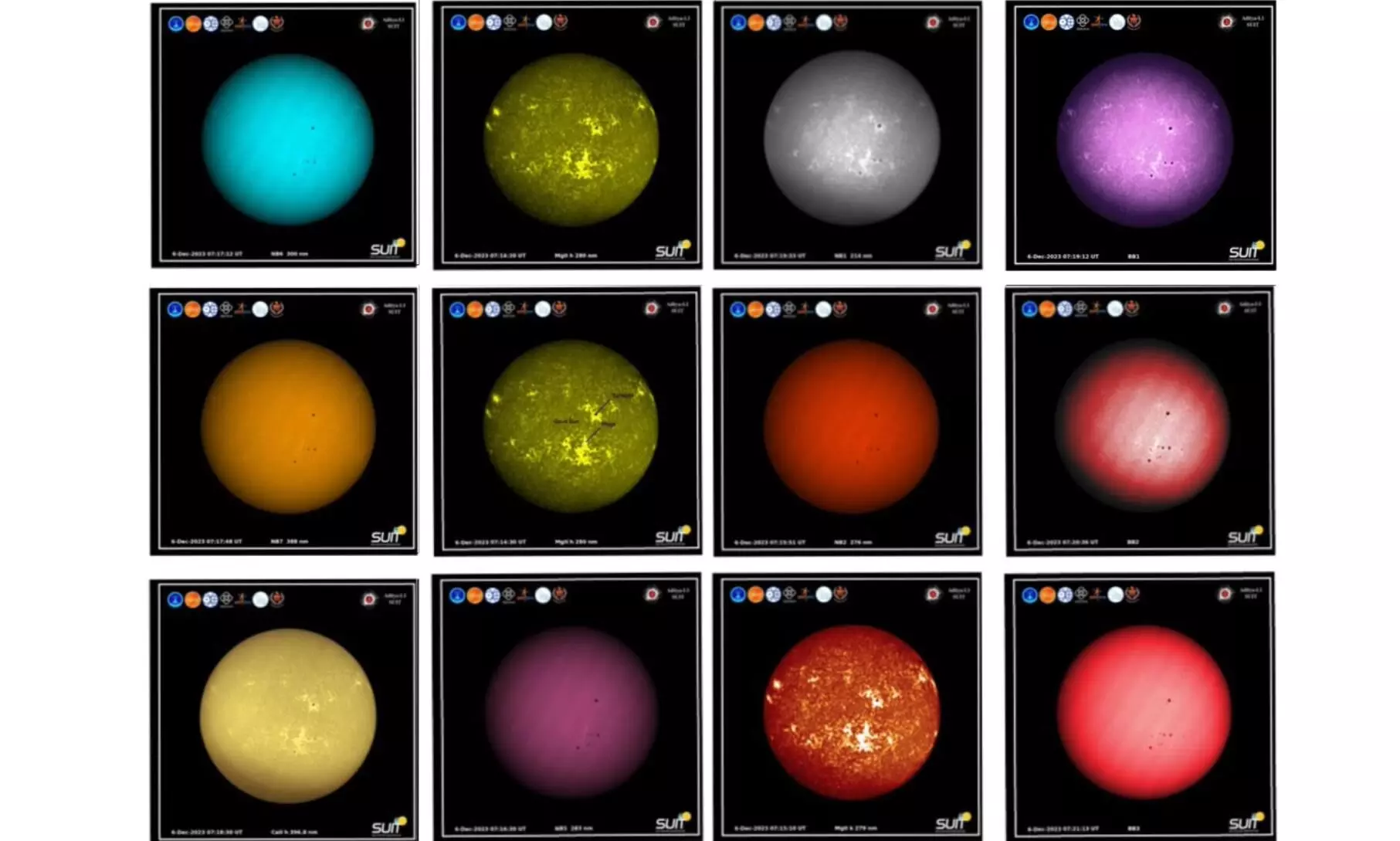Aditya L1 Mission: India’s cosmic dance continues as ISRO’s Aditya reaches its destination
Following solar missions by the US, Japan, China and the intergovernmental European Space Agency (ESA), Saturday’s development marks India’s entry into the elite club at a cost of just $55 million

An earlier image of the Sun taken by the mission
New Delhi, Jan 6: Following the successful placement of Aditya L-1 in its designated orbit at Lagrange Point 1, India’s maiden space-based observatory to study the sun, the world’s most successful yet lowest-cost space agency, the Indian Space Research Organisation (ISRO), has quietly added yet another achievement under its belt.
ISRO launched the probe aboard its workhorse, the Polar Satellite Launch Vehicle (PSLV-C57), from the second launchpad at the iconic Satish Dhawan Space Centre (SDSC) off the Andhra Pradesh Coast in an elliptical orbit around the Earth on September 2 last year.
Congratulating scientists who tirelessly worked on the challenging project, Prime Minister Narendra Modi wrote on X, “It is a testament to the relentless dedication of our scientists in realising among the most complex and intricate space missions.”
Minister of State of Department of Space Dr. Jitendra Singh “… yet another success story scripted by Team #ISRO. #AdityaL1 reaches its final orbit to discover the mysteries of Sun-Earth connection.”
Aditya L-1 will study our solar system’s giant power plant from a halo orbit around the first Sun-Earth Lagrange point or L1, located nearly 1.5 million km from Earth.
"Lagrange points are positions in space where the gravitational forces of a two-body system like the Sun and the Earth produce enhanced regions of attraction and repulsion. These can be used by spacecraft to reduce fuel consumption needed to remain in position,” according to the US space agency, the National Aeronautics and Space Administration (NASA).
The strategic placement at the L1 Lagrange point will enable the Aditya-L1 to maintain a constant, uninterrupted view of the sun.
This location also allows the satellite to access solar radiation and magnetic storms before Earth’s magnetic field and atmosphere influence them.
“Additionally, the L1 point’s gravitational stability minimises the need for frequent orbital maintenance efforts, optimising the satellite’s operational efficiency,” said an ISRO statement.
Aditya, in Sanskrit, means the sun.
Countdown to placement
After its September launch, Aditya L-1 underwent four Earth-bound orbital manoeuvres before being put in the transfer orbit towards the Lagrange point L1.
The 1,500 kg Aditya-L1 probe carries seven Made in India scientific payloads developed by ISRO and national research laboratories, including the Indian Institute of Astrophysics (IIA), Bengaluru, and the Inter University Centre for Astronomy & Astrophysics (IUCAA), Pune.
Five payloads have been developed by ISRO, while two were developed by research institutes in association with the national space agency.
Four of the remote sensing payloads, comprising the Visible Emission Line Coronagraph (VELC), Solar Ultraviolet Imaging Telescope (SUIT) Narrow & Broadband, Solar Low Energy X-ray Spectrometer (SoLEXS) or soft X-ray spectrometer and High Energy L1 Orbiting X-ray Spectrometer (HEL1OS) or Hard X-ray spectrometer will be utilised for imaging the Sun’s corona, photosphere and chromosphere imaging and observation of the star.
In-situ payloads like the Aditya Solar Wind Particle Experiment (ASPEX), Plasma Analyser Package for Aditya (PAPA) and advanced Tri-axial High Resolution Digital Magnetometers will help in observing the direction of solar winds as well as proton and heavy ion particles for magnetic fields.
So far, the US, Japan, China and the intergovernmental European Space Agency (ESA) have successfully launched missions to the Sun. Saturday’s development marks India’s entry into the elite solar club. And at a cost of just $55 million.
